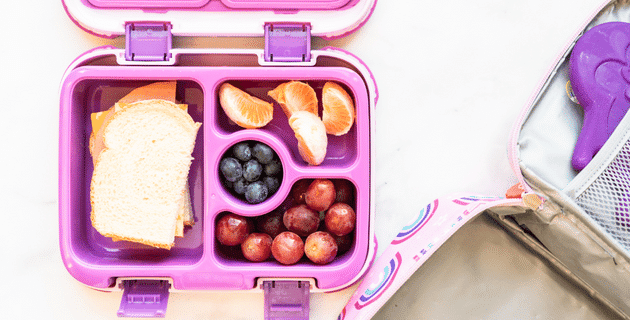
by California Casualty | Firefighters, Peace Officers |
About an hour after the first plane struck the World Trade Center on the morning of September 11, 2001, Michael Wright found himself on the 81st floor of the North Tower, trapped in complete darkness and smoke. That’s when he heard the rumble: The South Tower was collapsing.
“I was lucky enough to be next to a first responder,” Wright said. “I can credit him for the fact that I am alive now.”
For John McLaughlin, rescuers found him the next morning, buried in the ruins of building two. “The last bits of rubble were cleared, and they were able to pull me out with nylon straps,” he said.
Survivor Wendy Lanski recalled how after the planes struck, “Police and firefighters and EMS workers were everywhere … [they] were coming up to us, grabbing us in groups, saying, ‘Go out this door, run across the street, cover your head, and don’t look up.’” As she and her colleagues rushed to escape the building, first responders were charging in, intent on saving lives.
Tragically, many of them never made it out. In all, 412 first responders – 343 firefighters, 24 law enforcement officers and 8 emergency medical personnel – were lost when the towers fell. With them, 2,565 people in and around the buildings.
Unprecedented
September 11, 2001, marks the deadliest terrorist attack in U.S. history, when four commercial planes were hijacked by members of al Qaeda and flown into buildings in New York City and Washington, D.C. The fourth was thwarted when passengers resisted, causing it to crash into a field in Pennsylvania instead of its intended target.
The attack left Americans reeling in shock, horror, and grief. In an instant, devastation rippled out across families, communities, and the nation.
In sharing that heartbreak and devastation, though, Americans came together. Within hours, an incomprehensible tragedy had galvanized a renewed spirit of national unity.
Much of that was sparked by the stories of courage and heroism that had emerged within minutes of the attack. Strangers risking their lives to run back into the towers to save others. Office workers staying behind for friends who were trapped or had disabilities.
And, of course, the hundreds of first responders – the warriors who rushed in to save lives, despite the overwhelming danger. Over the next days and weeks, countless stories like those of Wright, McLaughlin, and Lanski emerged, painting a profound story of the best of humanity.
Remembering the Fallen
Besides being the single deadliest attack in human history, 9/11 was also the single deadliest incident for firefighters and law enforcement officers in U.S. history.
As we take time on 9/11 to reflect on the national tragedy that occurred 20 years ago, we will remember the heroes who made the ultimate sacrifice that day. They were fire, EMS, and law enforcement personnel, but more importantly, they were husbands, fathers, wives, mothers, brothers, sisters, friends, and beloved colleagues.
How You Can Honor Them
Here are some ways you can honor our 9/11 heroes:
- Visit a memorial. There are memorials and monuments at or near the sites of the attacks, as well as across the country. The 9/11 Memorial & Museum also offers an online experience to learn more and pay tribute.
- Help 9/11 responders. Due to the chemicals and toxins released at the attack sites, many 9/11 first responders have since developed or died from illnesses such as cancer, respiratory diseases, and other chronic conditions. Support organizations that are directly helping responders who’ve fallen ill.
- Support your local first responders. By supporting your local heroes, you are giving thanks to all those who answer the call to serve and protect. Say yes to that next pledge or fundraising drive hosted by your community’s firefighter or police department.
If you are a first responder, you can:
- Join a 9/11 memorial stair climb. Every year, thousands meet up to climb the equivalent of 110 stories, the height of the World Trade Center towers. Normally held in office buildings, convention centers, and stadiums, this year the stair climb events are mostly virtual. Find one near you.
- Engage with your community. Although your job is serving others, doing so in your off hours – for causes close to your heart or in different areas of interest – will bring you closer to your community and first-responder network. Find a cause that could use your expertise or energy, or educate others about the EMS profession and inspire the next generation of first responders.
- Practice self-care. Learn to be aware of and manage your stress levels. Employ healthy coping mechanisms, take care of your mind and body, and be sure to reach out if you need to talk with someone or get support. Be there for your first responder family, many of whom are at increased risk of suicide.
Although we can’t erase the tragic events that took place 20 years ago, we can honor its fallen heroes by being kind and generous toward our neighbors and finding ways to serve in our communities.
This article is furnished by California Casualty, providing auto and home insurance to educators, law enforcement officers, firefighters, and nurses. Get a quote at 1.866.704.8614 or www.calcas.com.

by California Casualty | Educators |
Class is back in session! Or at least it’s about it be for the majority of schools across the nation.
Here’s how teachers are feeling about that…
When your summer break ends:
And when you can get back in your classroom:
And then all of the meetings…
When it’s finally time for that first week back:
It sure is good to be back!
In the chaos of it all, remember- you’ve got this!
This article is furnished by California Casualty, providing auto and home insurance to educators, law enforcement officers, firefighters, and nurses. California Casualty does not own any of the photos in this post, all are sources by to their original owners. Get a quote at 1.866.704.8614 or www.calcas.com.

by California Casualty | Educators |
It’s time to get organized for school lunches. Packing lunches for your kids doesn’t have to be a chore, and it doesn’t have to be time-consuming either. Try these creative back-to-school lunch packing hacks to free up an already busy school morning!
#1. Give the sandwich a makeover.
Sandwiches are a school lunch mainstay, but they can be a bit boring even when you pack your child’s favorite, such as PBJ on white bread. Try repackaging the sandwich in these fun ways:
-
- Reinvent your child’s sandwich as a wrap. Use PBJ, meat and cheese, banana and peanut butter, or any filling that your child likes. Roll it up and then slice it. Now it looks like a colorful pinwheel.
- Cookie cutters can transform a traditional sandwich into stars and circles or other fun shapes. Or use them to cut out sandwich ingredients such as cheese or meat. Include crackers so your child and build his or her own sandwich.
- Use a roll, bun, or pita pocket instead of traditional sliced bread.
- Make your own Uncrustables® with a sandwich sealer. You can even freeze them individually in plastic bags and drop them into the lunch box in the morning.
#2. Build a Bento box.
A Bento box is a boxed meal that originated in Japan. It features single-serving compartments for each part of the meal.
-
- Buy a Bento box or make your own by filling a container with colorful silicone muffin liners to separate different foods.
- Create a complete lunch with components in each compartment. Include a main protein, a carb, vegetables, and fruits, and as many bright colors as possible. Choose healthy options that your child likes.
- The key is to keep every section separate so that wet food doesn’t mix with dry.
- Kids generally have only about 30 minutes to eat, and probably less by the time they sit down and get settled, so remember not to overpack.
Pro Tip: Store your (clean) bento box in the freezer, which will help to keep everything cool when you grab it for its next use.
#3. Make a kabob.
Kabobs aren’t just for grilling. (Plus, everything is more fun on a stick.) Just make sure that if you’re giving your child a kabob, the stick and the food portions do not present a danger.
-
- You can stack meats, cheeses, veggies, and/or fruits on kabobs. You can even create themed kabobs such as pizza, with mozzarella, tomato, and pieces of bread.
- Make sure the pieces are small enough that they do not present a choking hazard.
- Cocktail straws make great (and colorful) kabob sticks for children. You can always pre-pierce the food with a real kabob to create the opening, and then stack it on a cocktail straw.
#4. Replace the ice pack.
Ice packs can take up unnecessary room in lunch boxes. Luckily, there are ways for the lunch box contents to do double duty to cool things down.
-
- Freeze your child’s juice box. It will thaw in time for lunch and keep everything cold.
- Use a small plastic bag of frozen berries to keep yogurt cool. Your child can add the berries to the yogurt during lunch.
- Fill a reusable water bottle ¼ full and freeze it on its side. When you’re ready to put it in your child’s lunch box, fill the bottle with water. It will help keep everything cool including the water.
- Yogurt tubes and applesauce packets freeze well and can be used as ice packs.
#5. Use leftovers.
Plan your dinners so that you can repurpose them for lunch. You can get into the habit of preparing lunch when you’re waiting for dinner to cook.
-
- Keep food warm with a food thermos. This will work well for macaroni and cheese, chicken nuggets, Ramen noodles, and other kid favorites.
- Cut up leftover chicken for a chicken wrap.
- Chop extra veggies for lunch when making dinner and store them in bags.
Pro tip: fill your thermos with boiling water in the morning. Let it sit for 5 minutes. Empty it and then fill it up with hot food. It will keep it hotter longer.
#6. Make a school lunch station.
An organized space in your kitchen can help you more easily prepare school lunches. Keep it well-stocked and involve your kids in the preparation.
-
- Find a place in your kitchen, pantry, and refrigerator where you can set up bins for school lunches. If you don’t have an obvious place, create one. Consider a rolling cart or an over-the-door shoe organizer.
- Store lunch options for the week in these spaces, for example, yogurts, fruit, cheese, and cut-up veggies in the fridge, and healthy homemade trail mix, chips, and granola in bins on a shelf.
- Ask kids to assemble a week of snack bags to go. Give them 5 empty bags and an assortment of snacks. Place filled bags on a shelf or a basket on the kitchen counter where they can be easily grabbed.
- Include hooks in your pantry or mudroom to keep lunch bags organized.
And of course, we all know that packing lunches at night is WAY easier than getting up and trying to do it in the morning. Just store them in the fridge and give them to your child before they head out the door.
Happy back to school!
This article is furnished by California Casualty, providing auto and home insurance to educators, law enforcement officers, firefighters, and nurses. Get a quote at 1.866.704.8614 or www.calcas.com.

by California Casualty | Educators, Safety, Travel |
Back-to-school means back to hectic schedules. Between sports, clubs, and other after-school events it feels like you are being pulled in all directions. Considering that other parents are making the same hectic trek, there’s an opportunity to lighten the load. Carpooling.
Not only can carpooling free up your schedule, but it can also help you save on gas. (Definitely a bonus!) Follow these tips to set up your carpool experience for success.
1. Find your carpool buddies.
It’s best to carpool within a trusted network of fellow parents. Don’t worry about coordinating around age or gender. The goal is to make your life easier and not simply offer car time for your child and his bestie.
That being said, start with your child’s friend group and see who might be joining the same activities. If they live nearby, that could be a match. Otherwise, ask the coach or coordinator for a parent contact list and reach out to those who live close to you. Also talk to parents at activity pickup, at school PTO meetings, or at your local religious services. Even friends of friends might be good carpool candidates.
Pro Tip: Pick the right number of kids for your carpool. Younger children need more attention and so their carpools should be smaller.
2. Set the schedule.
It’s important to make a set schedule so that kids aren’t left waiting. Using a carpool app can help you organize, and some apps even come with reminders. Some popular apps include Carpool-kids, Waze Carpool, and GoKid. You can even use Signup Genius or Google sheets. (If you use Google, you will want to download the sheets app to your smartphone.) You also can do an email or text chain.
Choose the system that works for your group and make sure everyone is comfortable with it. Also, it’s important to make sure you can communicate with other parents in the case of an emergency, accident, sickness, or unexpected change of plans. (Anyone who has forgotten an early dismissal day knows the importance of communication.)
Pro Tip: Post a copy of the carpool schedule near the door and include it in your child’s backpack. This way, he or she knows who is picking up.
3. Set expectations.
If possible, schedule an in-person meeting with your carpool participants. Not only does it make it easier to create the schedule, it helps you come to an agreement on rules and expectations. For example, how many minutes late is too late? What is the policy if you’re picking up a child who is not ready? Verify schedules and conflicts. Determine food allergies if any. Inquire about health-related concerns.
Pro Tip: Important point for discussion: Don’t let anyone outside of the carpool cover the route (e.g. babysitter, grandma) unless every parent is aware and agrees.
4. Stay safe.
Don’t forget to discuss the safety rules. For example, children must enter and exit the vehicle from the curbside. Only kids who are 13 and older may ride in the front passenger seat. Students who do not meet the necessary height and weight requirements must ride in a booster seat.
For carpools, consider harness-style options that move the seatbelt down, rather than boost the child up, such as the WhizRider. These lightweight accessories can travel with your child and fit right in their backpack for easy access for carpooling.
5. Do a practice run.
You know the route to your child’s activities but you may not be familiar with the addresses where you are dropping your carpool kids. Do a practice run with the kids. Take a trip to the local ice cream parlor or head to the library. This will help you to work out any issues before you start.
6. Bring snacks.
If you’re shuttling kids from school to after-school activities, snacks and drinks are a must. Even if you’re just taking them home, you’ll find that food and drinks help to keep them happy. Greet kids with healthy portable snacks that don’t create too much mess. Chilled water in reusable bottles make a great choice because if they’re spilled, there won’t be too much mess. Keep any food allergies in mind when selecting snacks; alternatively, you can ask parents to pack their own child’s treat.
Pro Tip: Have a cleanup pack on hand that includes paper towels and baby wipes. Put a trash bag in the backseat where the kids can put their trash.
7. Don’t forget entertainment.
Even a short car ride can be made more enjoyable when the occupants are entertained. This may include car karaoke with their favorite songs or taking turns reading aloud from a joke book. You also may want to provide games with magnetic pieces. Just make sure you have a place to store them, such as with a backseat organizer. For older kids with different musical preferences, headphones work well as they listen or watch on their devices. Finally, if you’re going to be waiting in the car, keep the things that entertain you. Bring a favorite book, a relaxing playlist, and a charger, and enjoy some much-deserved quiet time.
8. Check in with your child.
Things may be going well on your end, but you don’t know what happens when the other parents are driving. Check-in periodically with your child. Get his or her perspective on the carpool, and make adjustments as needed. It’s also a chance to determine if you need to rethink participating in a carpool.
Finally, if you’re transporting precious cargo, you’ll want to ensure that your vehicle is carpool ready. Keep your car well maintained. Protect your vehicle with the right insurance for peace of mind.
Safe travels.
This article is furnished by California Casualty, providing auto and home insurance to educators, law enforcement officers, firefighters, and nurses. Get a quote at 1.866.704.8614 or www.calcas.com.

by California Casualty | Educators |
When it comes to middle school and high school students, you know just any icebreaker won’t do. It has to be something inclusive, engaging, and team-building—and one that doesn’t require teens & tweens to immediately open up to their peers.
If you’re looking for a good first day icebreaker for middle or high school classes as you prepare to go back to school, we’ve got some ideas. Whether you’re a first-year or veteran teacher, here are 15 fail-safe ice breakers that are proven to work well.
1. Silent Line-up
Challenge your students to silently line up by height. Easy, right? Now have them try it by birthday month in calendar order. In doing so, they must communicate without talking or writing. You can even divide the class into random groups and have them compete to finish first. When students are done, go down the line and see how well they did. As a wrap-up, discuss how students used nonverbal cues to communicate and underscore how much they can achieve without talking.
2. Common Ground
Ask students to gather in groups by how many languages they speak, how many pets they have, or other criteria. Once students are in their group, have them share which languages they speak or their kinds of pets. Then challenge each group to find other things they share in common, such as number of siblings, favorite video game, etc. (Split the groups if needed to be more manageable.) Adding an incentive for the group that finds the most commonalities could motivate students.
3. Tarp Flip Challenge
Put some tarps on the floor, and assign a group to stand on each tarp. Then challenge the groups to completely flip over the tarp without ever stepping off of it. You’ll have to have a way to determine the different sides of the tarp (and may have to mark it). You also may need a volunteer or two to help you watch the groups to make sure they follow the rules.
4. 20+ Questions
This is the teacher variation on the popular game. Instead of thinking of something in the room, start with an item of personal importance. Tell your students you brought something with you but they will have to guess by asking only yes/no questions. Frame out some sample questions on the board, such as “Can you ____ with it?” and “Is it made of _____?” When students have guessed the object, show it and have them pose questions to you about it.
5. Snowball Station
Ask students to write three facts about themselves on a piece of paper but not to write their names. Offer prompts to make the task easier, such as favorite ice cream flavor, activities, number of siblings or pets, etc. Then have students crumple their papers into a ball and one by one have them come up and toss their ball into a bin. Then have each student retrieve a “snowball” and guess the student who wrote it.
6. Count Up
This next exercise works well when students are standing or sitting in a circle. Challenge them to count, in random order, from 1 to the number of students. Anyone can start the count, and anyone can count in any order but no one can do two numbers in a row. If students speak at the same time, they have to go back to the beginning. It’s more challenging than you might think, and it promotes great teamwork.
7. People Bingo
Create bingo cards with attributes that could describe your students, such as “has traveled out of the country,” “speaks more than 1 language,” “has a dog,” or “can name all of the seven dwarves.” Then give each student a Bingo card and challenge them to find classmates who fit a category. The student that does must initial the board, and can only do so once for that classmate. This gives students the best chance to meet everybody.
8. A Strong Wind Blows
Set up a circle of chairs that is one less than the students in your class. Ask for one volunteer to stand in the center. The remaining students take a seat in the circle. The object of the game is not to be in the center. The center student will say, “a strong wind blows on anyone….” and give an attribute (for example, has a cat or likes pizza). Anyone who fits the category must find a different seat, allowing for the person in the center to sit in theirs. The one rule is that students cannot name a category that targets only one person (e.g. the one wearing black sneakers or the one named Alex). The more general the category, the more fun it will be as students scramble for different seats.
9. Giant Jenga
Buy a giant Jenga set and label each piece with a “get to know you” question. As students add their pieces to the tower, they must answer the question. Make the questions easy and fun, so students will not feel vulnerable. Examples may include “favorite candy,” “favorite cause or charity,” and “what they would do with a million dollars.” Ask for elaboration based on a student’s comfort level and the question.
10. Race for the Truth
Line students up and let them know that you will be reading a list of attributes. You can use similar ones to People Bingo or A Strong Wind Blows, above. If the attribute applies to them, they are to take one step forward. (Demonstrate the length of step expected.) The first one across the finish line wins.
11. Who Am I?
This classic game puts the name of a well-known figure on a student’s back, and the student has to guess who they have, based on asking yes/no questions of fellow classmates.
Pro Tip: Have students write the name of a famous person on an index card. This will ensure that the names are relevant to your class. Collect the cards and use them to tape on the backs of everyone.
12. World’s Worst Employee
Write down types of jobs on index cards. Then have student volunteers pick a card, and make up a quote that might be said by the world’s worst employee in that profession. Example: For an Uber driver, a student might say, “I don’t have a driver’s license and I hate when people get in my car.” The class then has to guess the profession.
13. Build-it challenge
Pair or group students. Give them materials such as paper clips, drinking straws, Q-tips, string, paper, or other items. Then, challenge them to build a tower, a bridge, a class mascot, or another item within a certain timeframe. Then, have each group present their item to the class.
14. Two Truths and a Lie
This is a classic game that students will know well. Ask each student to come up with two truths and one lie about themselves. The other students vote on which is the lie.
15. Rock-Paper-Scissor Tournament
A throwback to their childhood, middle and high schoolers will love the chance to revisit this game. Start with pairs, and then have winners play winners until you’re down to the final two. Remember that rock beats scissors, paper beats rock, and scissors beat paper.
This article is furnished by California Casualty, providing auto and home insurance to educators, law enforcement officers, firefighters, and nurses. Get a quote at 1.866.704.8614 or www.calcas.com.































